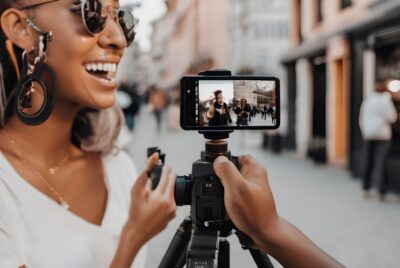Photography Headshots: Capturing Moments with Impact
As an enthusiast and advisor in the field of photography headshots, I understand the importance of capturing memorable moments and creating impactful images. Photography headshots are a powerful way to showcase one’s personality, professionalism, and unique qualities. In this article, I will guide you through the equipment needed and provide tips for successfully capturing stunning photography headshots.
I. Introduction
A. Definition of Photography Headshots
Photography headshots are close-up portraits that primarily focus on an individual’s face. They aim to capture the subject’s personality, expression, and sometimes even their character. These headshots are commonly used in various professional contexts, such as corporate profiles, social media platforms, acting portfolios, and modeling agencies.
B. Importance of Photography Headshots
Photography headshots play a crucial role in creating a positive first impression. Whether you’re a business professional, an actor, or a model, a well-crafted headshot can communicate confidence, approachability, and professionalism. It serves as a visual representation of who you are and what you have to offer. Investing in high-quality headshots can significantly impact your personal brand and open doors to new opportunities.
II. Equipment Needed for Photography Headshots
To capture stunning photography headshots, it’s important to have the right equipment. Here are the essentials:
A. Camera
Choose a camera that allows you to shoot in manual mode. This gives you full control over settings such as aperture, shutter speed, and ISO, enabling you to achieve the desired depth of field and image quality. A DSLR or mirrorless camera with a larger image sensor will produce superior results compared to a smartphone or point-and-shoot camera.
B. Lens
For headshots, it’s best to use a lens with a focal length between 50mm and 85mm. This range offers a natural perspective and produces flattering results. Prime lenses with a wide maximum aperture, such as f/1.8 or f/1.4, are ideal for creating a shallow depth of field and beautiful background blur.
C. Lighting
Invest in a good lighting setup to ensure well-lit and properly exposed headshots. Consider using a combination of natural light, reflectors, and artificial lighting. A softbox or a diffuser can help soften harsh shadows and create a pleasing, even light on the subject’s face.
D. Background
Choose a background that complements the subject and conveys the desired mood. A plain backdrop in a neutral color, such as white, gray, or black, is commonly used for professional headshots. This allows the focus to remain on the subject without any distractions.
III. Tips for Successful Photography Headshots
Capturing compelling photography headshots requires careful planning, effective communication, and attention to detail. Here are some tips to help you achieve success:
A. Planning and Preparation
Before the photoshoot, discuss your vision and objectives with the subject. Understand their goals, the purpose of the headshots, and the intended audience. Plan the location, wardrobe, and overall concept accordingly. Preparing a shot list or a mood board can be helpful in visualizing the desired outcome.
B. Posing and Expression
Guide the subject on posing techniques that enhance their features and convey the desired message. Encourage natural and relaxed expressions, while also capturing their unique personality. Experiment with different angles, head positions, and facial expressions to find the most flattering and authentic look.
C. Lighting and Composition
Pay close attention to lighting and composition during the photoshoot. Ensure that the subject is evenly lit, avoiding harsh shadows or blown-out highlights. Consider the rule of thirds and framing techniques to create a well-balanced composition. Experiment with different lighting setups and angles to achieve the desired mood and emphasis.
D. Wardrobe and Styling
Advise the subject on suitable wardrobe choices that align with the intended purpose of the headshots. Recommend solid colors and avoid distracting patterns or logos. Additionally, provide guidance on grooming, hair styling, and makeup (if applicable) to ensure a polished and professional appearance.
IV. Editing and Retouching Photography Headshots
Post-processing plays a significant role in enhancing the final result of photography headshots. Here are some editing and retouching techniques to consider:
A. Basic Editing Techniques
Start by adjusting the exposure, contrast, and white balance to achieve a balanced and natural-looking image. Fine-tune the colors, saturation, and sharpness to enhance the overall impact. Crop the image if necessary to improve composition.
B. Skin Retouching
Retouch the subject’s skin while maintaining a natural appearance. Remove blemishes, smooth out wrinkles, and reduce any skin imperfections. Be mindful of not overdoing the retouching, as it should still look like the subject’s real skin.
C. Color Correction
Ensure consistent color tones throughout the headshots by correcting any color cast or white balance issues. Adjust the saturation and vibrancy to create a pleasing visual impact. Experiment with black and white conversion for a timeless and classic look.
V. Conclusion
Photography headshots have the power to leave a lasting impression and open doors to new opportunities. By understanding the equipment needed and implementing the tips provided, you can capture compelling headshots that truly represent your unique qualities. Remember, preparation, effective communication, and attention to detail are key to achieving stunning results. With all this new information you have discovered here, you will want to know the best place to buy cameras and camera equipment. We give you 10 reasons why you should buy cameras and equipment from Amazon here.
VI. FAQs
1. Can I use a smartphone to capture photography headshots?
• While smartphones have improved in terms of camera quality, it’s recommended to use a DSLR or mirrorless camera for professional headshots. The larger sensor and manual control options provide better image quality and creative flexibility.
2. What is the ideal location for photography headshots?
• The ideal location depends on the purpose and desired atmosphere of the headshots. Professional settings often use plain backdrops, while environmental portraits may benefit from natural outdoor locations.
3. How can I help my subject feel comfortable during the photoshoot?
• Establishing a rapport and creating a relaxed atmosphere is crucial. Engage in friendly conversation, offer clear directions and feedback, and provide positive reinforcement. Make the subject feel valued and encourage their natural expression.
4. Should I retouch the headshots extensively?
• Retouching should aim to enhance the image while maintaining a natural appearance. Avoid excessive retouching that alters the subject’s features significantly, as it may lead to unrealistic and misleading representations.
5. What file format should I save the final headshots in?
• Save the final headshots in a high-quality file format, such as JPEG or TIFF, to ensure optimal image quality. Consider the specific requirements of the intended usage, such as resolution and color space.
In conclusion, photography headshots are a powerful tool for personal branding and making a memorable impression. By understanding the equipment needed, planning effectively, and implementing the tips provided, you can capture striking headshots that showcase your unique qualities. Remember to communicate and collaborate with your subjects to bring out their authentic selves. Now, grab your camera and start capturing those impactful moments!
Further reading
Check out our other relevant articles:
Check out our comprehensive guide to other photography subjects here.




